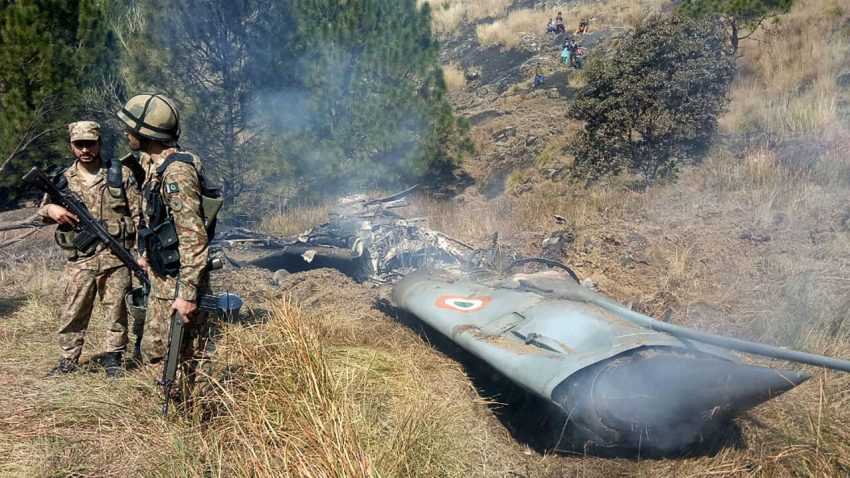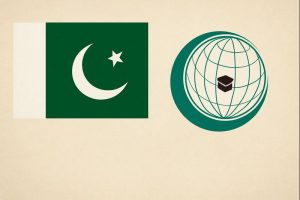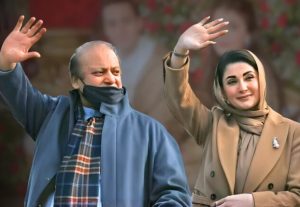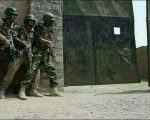The South Asian geopolitical landscape has undergone a profound recalibration following the recent 18-day confrontation. For seasoned observers, what commenced as India’s characteristic display of belligerent rhetoric and assertive posturing culminated in a scenario long cautioned against: a desperate, humbling scramble for a ceasefire by New Delhi, not from a position of assured strength, but from the precipice of a strategic humiliation largely of its own making.
As the adverse consequences of India’s escalatory actions rapidly intensified, compelling urgent entreaties to the international community – and particularly to the United States – for a ceasefire, a stark geopolitical reality crystallized: India found itself in conspicuous international solitude. No significant global power lent overt support to its stance or its actions. So, picture this: India was out there all alone, with no one backing them up. At the same time, people around the world were starting to see that Pakistan was actually handling things pretty smartly and sticking to its principles. It really felt like, on a gut level, Pakistan was proven right – a real moral win. And seriously, if you just look at the facts, what our sources are saying, and what actually happened on the ground, it’s clear Pakistan came out of this much stronger. That’s not just us waving our flag; it’s looking at what they said they’d do versus what really went down.
A detailed examination of this critical period reveals several key dynamics:
Foremost, Pakistan appears to have secured a perceptible ascendancy within the international diplomatic arena. Despite New Delhi’s concerted efforts to cast Pakistan as the instigator, the global community observed Pakistan’s disciplined and measured conduct. So, you started seeing a real shift in how the world was talking. At first, everyone was kind of pointing fingers at Islamabad. But pretty quickly, especially as it became clear India was really taking a beating and things weren’t going their way on the ground, that pressure started moving. Suddenly, the big push was for India to back off. Then you hear these reports, right? Top U.S. folks talking with important allies in the Middle East. And the buzz was that India itself asked them to step in because things were getting so out of hand. It really paints a picture of a panicked New Delhi, scrambling for anyone to help them calm things down and find a way out of the mess they were in.
Furthermore, the prevailing narrative of India’s intrinsic conventional military superiority, a linchpin of its regional dominance strategy, was comprehensively debunked. A granular analysis of the engagements suggests Pakistan achieved clear operational superiority in both aerial and ground confrontations. The widely reported aerial clash, reputedly involving 82 Indian Air Force assets against 42 from the Pakistan Air Force, allegedly resulted in the confirmed neutralization of five Indian aircraft, including sophisticated Rafale platforms. Such a lopsided outcome for an air arm numerically three times larger than its adversary speaks volumes, laying bare significant vulnerabilities within the Indian Air Force. India’s subsequent increased reliance on drone operations, with over 80 such assets reportedly interdicted, and limited ground incursions while its primary air power remained largely constrained, further highlighted these operational shortcomings. Concurrently, India’s naval forces, despite their reputed capabilities, were unable to materially influence the strategic trajectory. In stark contrast, Pakistan’s offensive capabilities were convincingly demonstrated, with reports indicating successful strikes on 26 key Indian targets, including critical S-400 air defence installations and various military positions in Kashmir, showcasing a robust capacity for effective power projection.
And you know what else came out of all this? Something really big for Pakistan on the world stage. Kashmir. For so long, India has tried to just sweep Kashmir under the rug, telling everyone, ‘Nothing to see here, this is just our own business.’ But this whole fight, and the strong, smart way Pakistan handled it, just blew that wide open. Suddenly, Kashmir wasn’t just some forgotten headline; it was back, front and center, for the whole world to see. Now, everyone’s looking much more closely at what India’s actually doing over there, and that’s a huge shift, all thanks to Pakistan standing its ground.
Moreover, the vainglorious ambitions articulated by India’s ruling BJP government – encompassing unrealistic objectives such as the seizure of Azad Kashmir, the fomenting of instability in Balochistan, or the meting out of “punishment” to Pakistan – have visibly unravelled. Such declarative rhetoric foundered against the demonstrable reality of Pakistan’s national resolve and defensive capabilities, resulting not in retribution against Pakistan, but in a sobering lesson for New Delhi.
In direct correlation, India’s cultivated image as an emergent superpower on an inexorable ascent has suffered a significant setback. The carefully constructed narrative of a regionally dominant India, poised for a prominent global role, has been substantially eroded. International perceptions now appear to be recalibrating, assessing India’s actual power projection capabilities as more commensurate with, rather than distinctly superior to, those of Pakistan.
In the domain of information warfare, a notable sophistication in Pakistan’s strategic communication was observed. And you know what was really interesting to see this time? Pakistan’s media – both the usual news channels and what everyone was saying on social media – they really clicked. For the first time, it felt like they were all singing from the same hymn sheet, telling a clear, believable story that really hit back at what was coming out of India. They actually took on the Indian media, which often just felt like a lot of wild, over-the-top noise that nobody was buying, and frankly, often did a much better job. It was like Pakistan finally found its voice and showed they could seriously play the information game and get their truth out there. That was a huge step up for them in how people see things in the region and around the world.
Conversely, the credibility of substantial segments within the Indian mainstream media experienced a precipitous decline. The widespread propagation of unsubstantiated claims, disinformation, and hyper-nationalist rhetoric served to significantly undermine their professional standing and trustworthiness on the international stage.
India’s perceived propensity for state-sponsored disinformation and operations designed to mislead has also substantially diminished its international standing. The conspicuous absence of vocal, unequivocal support from major international powers for India’s position throughout the standoff was a telling indicator of this diminished credibility, as global actors display increasing weariness with unsubstantiated allegations.
This period of heightened tension also served as a crucible for Pakistan’s enduring alliances. The unambiguous endorsement and support extended by pivotal allies such as China and Türkiye underscored the resilience and strategic depth of Pakistan’s key international partnerships.
Ultimately, a prevailing analytical viewpoint suggests that Pakistan distinguished itself through its measured and mature conduct throughout this crisis. While New Delhi appeared intent on escalation, Pakistan initially demonstrated strategic restraint, subsequently executing a decisive, proportionate, and effective response. If India sought to impose its will through conflict, it instead received a stark lesson in strategic realities, with the outcome clearly favouring Pakistan.
Reports, including those from international media outlets like CNN, detailing alleged Indian overtures to the United States to facilitate a cessation of hostilities following Pakistan’s potent missile responses, lend credence to this analysis. It appears India, taken by surprise and finding itself operationally constrained, ultimately conceded to the pressure. Victory, indeed, possesses an inherent voice, and it currently resonates with a truth that New Delhi seems reluctant to acknowledge. This was an outcome predicated not on bombast, but on tangible capability, strategic foresight, and unwavering national resolve. The supposed regional hegemon was, it seems, forcefully reminded of its operational and strategic limitations.
While Pakistan undeniably faces its own internal challenges necessitating concerted efforts towards unity and dialogue, this episode has incontrovertibly demonstrated the nation’s strategic acumen and profound resilience in the face of external threats. This is a pure win for Pakistan and its armed forces.














